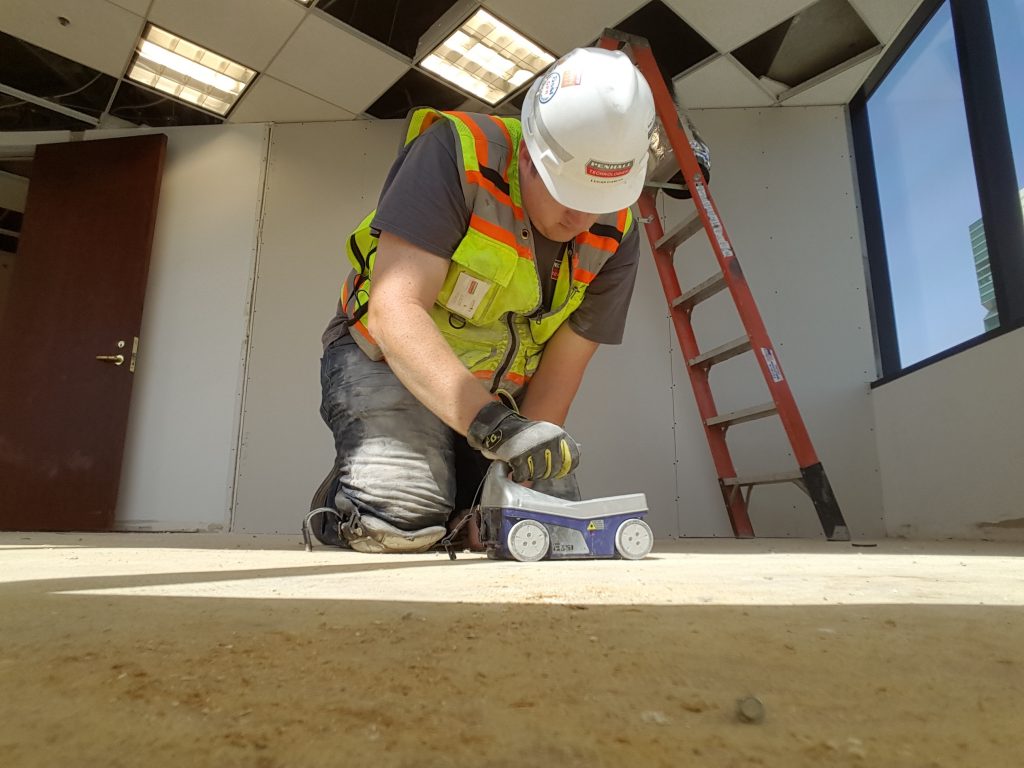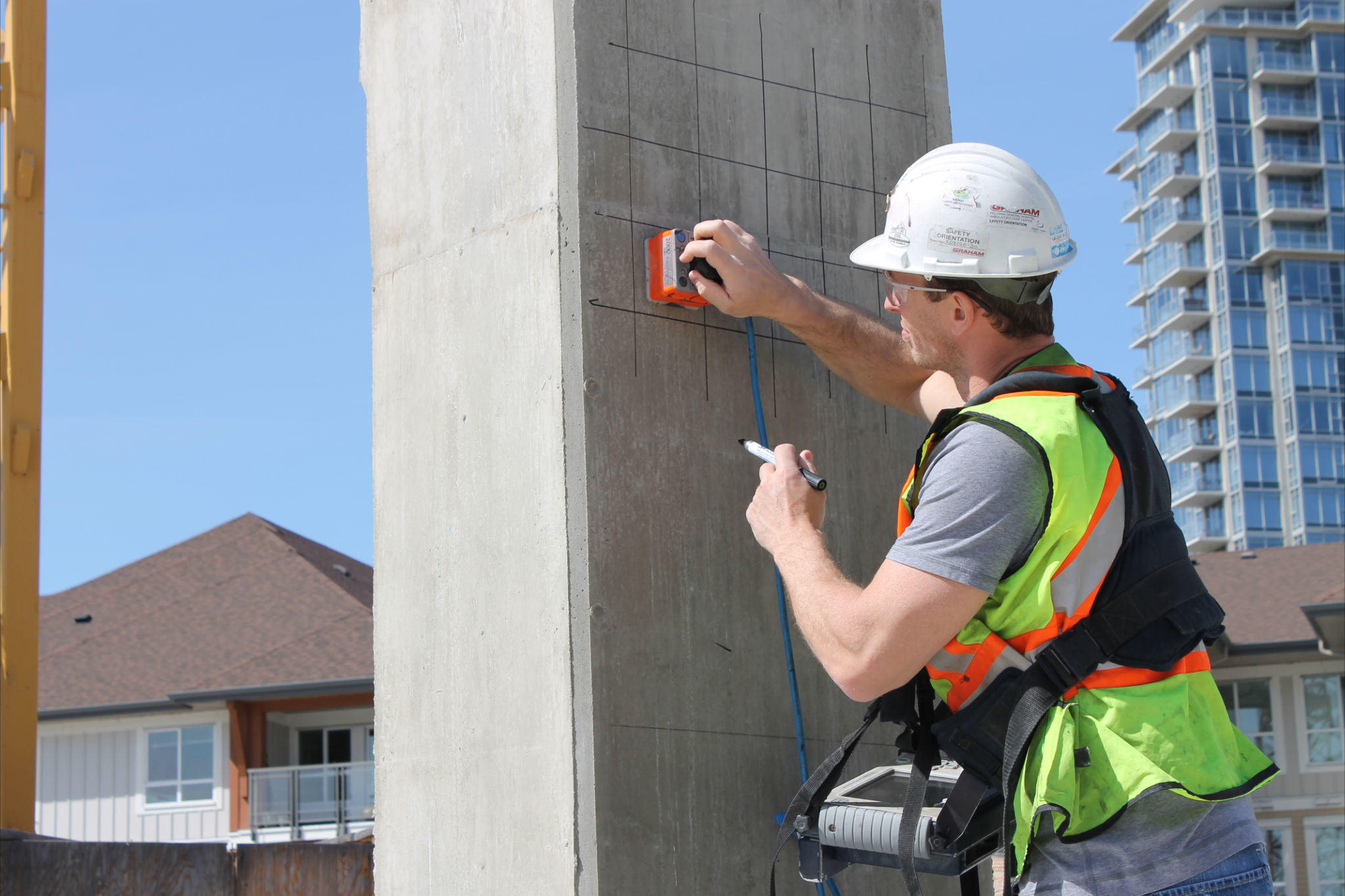Selecting the Right Concrete Scanning Tools
Selecting the Right Concrete Scanning Tools
Blog Article
Reveal the Transformative Power of Concrete Scanning in Making Best Use Of Efficiency and Safety And Security
Concrete scanning has become an essential device in the building and construction industry, offering exceptional advantages in boosting task effectiveness and guaranteeing safety and security requirements. By utilizing sophisticated modern technology, concrete scanning permits specialists to see beyond the surface, revealing hidden intricacies that can influence the architectural honesty of a structure. The transformative power of concrete scanning lies in its capacity to give detailed insights and real-time data, revolutionizing how projects are intended and implemented. As we look into the complexities of this cutting-edge method, a world of possibilities opens up, showcasing a brand-new period of building techniques that prioritize precision and safety.
Value of Concrete Scanning
Guaranteeing the architectural stability and safety of building and construction tasks begins with the vital action of performing thorough concrete scanning. Concrete scanning is a non-destructive method used to spot and map subsurface aspects within concrete structures. This procedure is essential in recognizing potential hazards, such as rebar, post-tension cable televisions, and avenues, that may be concealed within the concrete. By utilizing advanced technologies like ground-penetrating radar (GPR) and electromagnetic induction, construction teams can precisely situate these components without causing any damage to the framework.
The significance of concrete scanning can not be overemphasized, as it plays a vital role in preventing crashes, decreasing job hold-ups, and ensuring the lasting resilience of the building and construction. By identifying possible threats prior to the construction stage starts, home builders can apply suitable precaution and make notified decisions pertaining to the design and execution of the project. Furthermore, concrete scanning helps in enhancing project timelines and spending plan by staying clear of unforeseen expenses and hold-ups that might develop due to unpredicted obstructions within the concrete. Inevitably, spending in thorough concrete scanning is a proactive approach that boosts both efficiency and safety and security in building projects.
Exactly How Concrete Scanning Functions
Concrete scanning runs as an important tool in construction projects by employing advanced modern technologies to discover and map subsurface components without causing structural damage. Ground Passing Through Radar (GPR) and Electromagnetic Induction (EMI) are 2 main approaches used in concrete scanning. GPR jobs by emitting high-frequency radar pulses into the surface, which recover when they run into subsurface items or spaces. The moment taken for the signal to return suggests the deepness and location of the objects. EMI, on the other hand, makes use of electro-magnetic fields to recognize differences in product structures, such as determining rebar or conduits within concrete structures.
During the scanning process, the information gathered is evaluated in real-time, permitting instant identification of possible threats or barriers beneath the surface. By utilizing these innovative modern technologies, concrete scanning considerably lowers the risk of pricey damages and injuries on building and construction websites.
Benefits of Concrete Scanning
Using innovative scanning technologies in construction projects supplies a wide range of benefits, enhancing both efficiency and safety on-site. Among the primary benefits of concrete scanning is the capacity to identify and situate ingrained items such as rebar, post-tension wires, and conduits precisely. By identifying these elements before drilling or reducing right into concrete frameworks, the Recommended Site risk of unintentional strikes is substantially reduced, avoiding prospective injuries to employees and damage to the framework itself. Concrete scanning helps in preparation and creating more properly, as it gives specific information regarding the place and deepness i loved this of architectural parts.

Study: Concrete Scanning Success

In one more situation, a building and construction business used 3D concrete scanning to evaluate the problem old concrete structures in a historic structure. The thorough scans provided useful understandings right into the level of degeneration and assisted focus on maintenance initiatives successfully. By proactively addressing locations of concern identified with scanning, the business was able to extend the life expectancy of the structure and ensure occupant safety and security.
These study highlight the transformative power of concrete scanning in boosting effectiveness, precision, and safety in construction projects.
Executing Concrete Scanning in Projects
Executing advanced scanning innovations during construction projects has actually become significantly crucial for improving accuracy and safety. By incorporating concrete scanning right into project planning and execution, construction groups can recognize possible threats, such as rebar or post-tension cords, concealed within concrete frameworks. This positive technique minimizes the risk of mishaps, delays, and pricey rework, ultimately leading to much more efficient task timelines and spending plans.
To execute concrete scanning successfully, task managers must work together closely with experienced scanning professionals to establish the most ideal scanning methods for the specific project needs. Involving scanning specialists from the beginning of see here now a job enables the group to produce thorough scanning plans that address crucial locations of issue and make certain extensive information collection.
Moreover, integrating concrete scanning right into routine job workflows can streamline decision-making processes, as real-time scan data offers prompt insights into the condition of concrete structures - Concrete Scanning. This data-driven technique promotes notified analytical and allows groups to make adjustments quickly, fostering a society of efficiency and safety throughout the job lifecycle

Verdict
To conclude, concrete scanning plays a vital duty in enhancing efficiency and security in construction jobs. By using advanced modern technology to map and identify out underlying structures within concrete, this process assists to stop expensive mistakes, guarantee architectural honesty, and decrease risks on website. With the ability to uncover concealed elements and give accurate data, concrete scanning verifies to be a beneficial tool for enhancing job results and taking full advantage of general success.
Concrete scanning is a non-destructive technique made use of to spot and map subsurface elements within concrete structures. Additionally, concrete scanning aids in maximizing job timelines and spending plan by preventing unanticipated prices and delays that might occur due to unexpected obstructions within the concrete. One remarkable situation research study involves a large remodelling task where concrete scanning played an essential duty in making sure task success.In one more situation, a construction company utilized 3D concrete scanning to evaluate the condition of maturing concrete structures in a historic structure. By integrating concrete scanning into task preparation and execution, building teams can recognize potential risks, such as rebar or post-tension cords, hidden within concrete frameworks.
Report this page